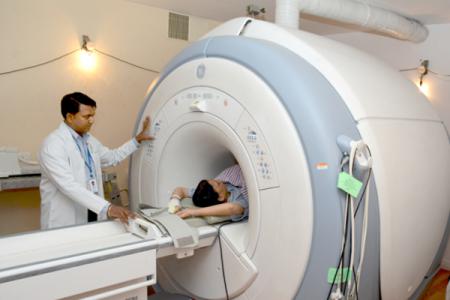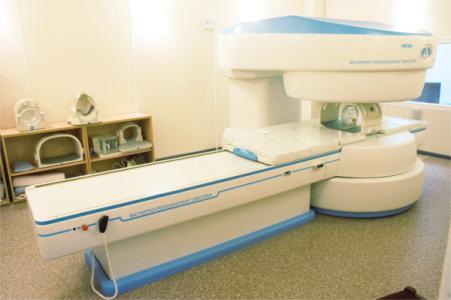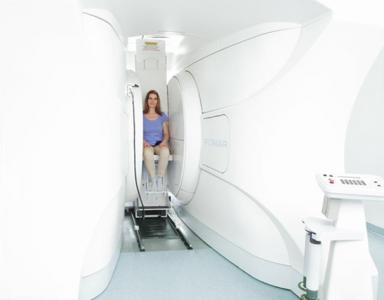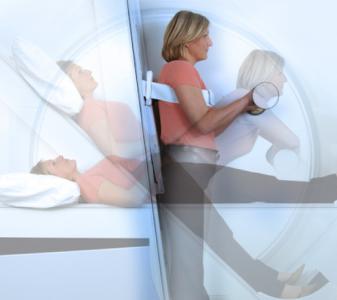Magnetic resonance imaging, or MRI, is a safe type of diagnostic technology that uses a strong magnetic field and radio waves to create images of the body. Unlike X-Ray or CT, MRI does not use radiation. MRI scanners in Germany are considered standard and found in nearly every German hospital. Some specialized outpatient clinics in Germany also have an MRI scanner. Besides the traditional MRI, claustrophobic patients in Germany may request Open MRI. For certain medical conditions, an open Upright MRI is used. A high-quality MRI scan is often necessary for a German doctor to make the right diagnosis.
Traditional MRI

In a traditional MRI scan, the patient lays in a long, narrow tunnel inside the machine. The opening is about 60cm (2 ft) wide, and the patient lies on their back with their arms folded over their chest while the scan takes place. The patient must lie very still during the examination, which can take upwards of 30 minutes. MRI scanners can be very loud, particularly older models, and sometimes require ear protection.
Newer models are designed to be more comfortable for the patient. Some types of traditional MRIs have tunnels that are shorter and wider, meant to reduce anxiety for the patient during the scan. Still, for patients who are obese, pregnant or afraid of small spaces, a traditional MRI scan can be unpleasant or even not possible. One study showed that nearly 40 percent of patients with claustrophobia were not able to complete an MRI examination using a traditional MRI scanner.
Open MRI

With a shape like two oversized hamburger buns, the open MRI is designed to reduce claustrophobia for patients who do not like feeling confined. The open design allows more air flow during the examination, and the patient can see out of the sides of the machine. Additionally, the patient is free to bring a close friend or family member into the examination room with them and hold their hand during the scan. This can reduce anxiety and provide patients with a sense of comfort during the exam.
An open MRI may not be suitable for scanning certain parts of the body, and some machines do not produce as high-quality of images as a traditional MRI. Discuss with a doctor if an open MRI could be an option to diagnose your specific condition.
Upright MRI

The upright MRI is the latest generation of MRI scanners to increase patient comfort. With the upright, or stand-up, MRI, the patient can be standing, sitting, reclining or lying down while the scan takes place. The equipment does not cover the patient’s face, so the patient’s vision is unobstructed. Some clinics even allow patients to watch TV during the scan.
 The upright MRI also has certain diagnostic advantages. When the patient is standing or sitting in the machine, their weight is distributed in a load-bearing position and their organs are positioned in the same way as they would be in day-to-day life. The technician can examine the patient in the best position to visualize the source of their symptoms. Particularly for certain spine conditions or types of internal organ prolapse, the condition may not be visible when the patient is lying down.
The upright MRI also has certain diagnostic advantages. When the patient is standing or sitting in the machine, their weight is distributed in a load-bearing position and their organs are positioned in the same way as they would be in day-to-day life. The technician can examine the patient in the best position to visualize the source of their symptoms. Particularly for certain spine conditions or types of internal organ prolapse, the condition may not be visible when the patient is lying down.
The number of open and upright MRI scanners in Germany is growing. To find a clinic that has the right diagnostic equipment for your medical situation, contact Premier Healthcare Germany.
